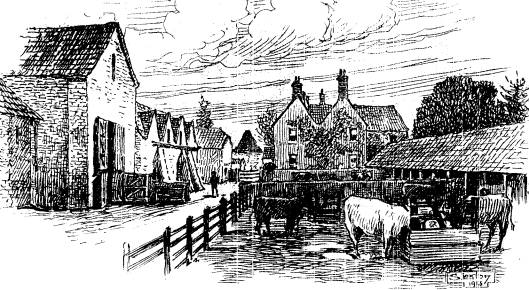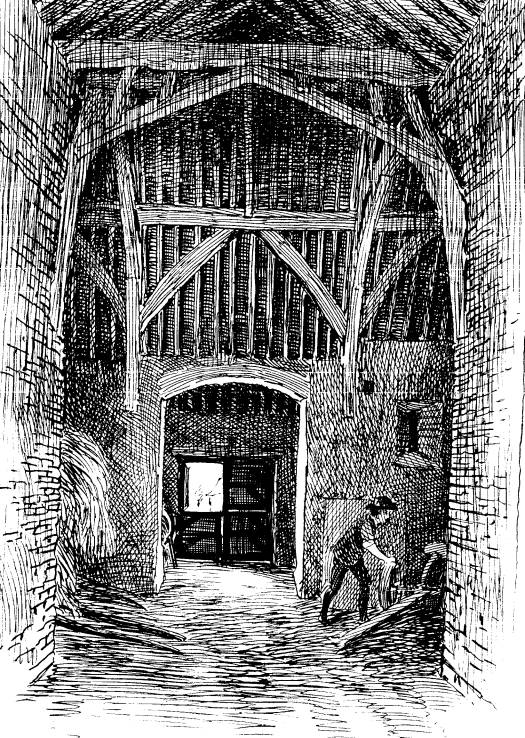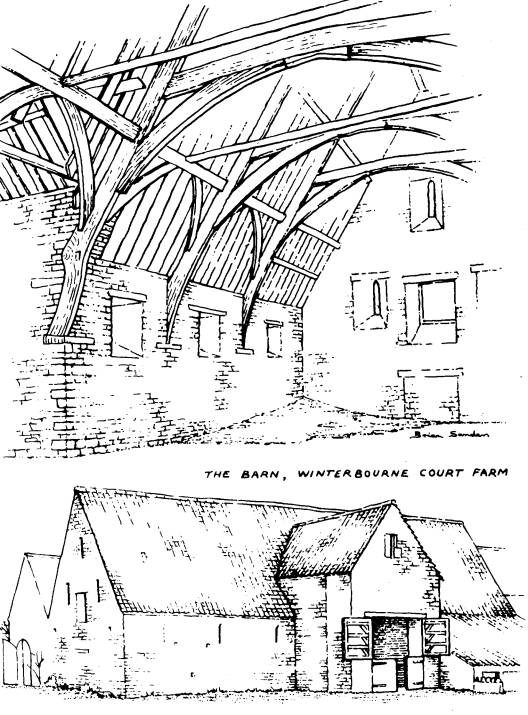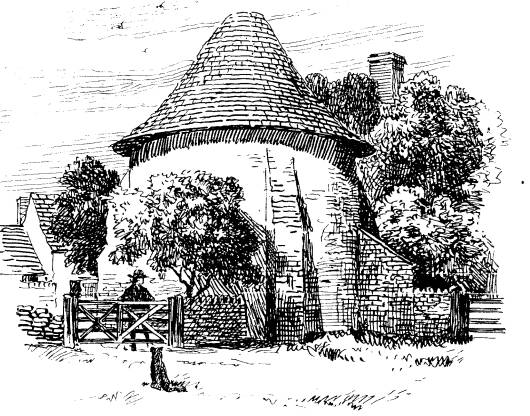 «Home
«Home «Home «Home |
WINTERBOURNE
South Gloucestershire
|
|
Winterbourne Court Farm Barn (Winterbourne Medieval Barn)
# Winterbourne Medieval Barn Official WebsiteWinterbourne Court Farm Barn is a member of a small group of great mediæval barns in the true cruck tradition which survive in South-West England. It was built in a raised-cruck form around the time of the Black Death.
It is the largest Gloucestershire cruck building of which we have any information. Its architectural significance is greatly enhanced by the historical evidence that it belonged to gentry rather than a monastic estate. The size of these barns relect the massive centralised agricultural exploitation of the estates of that period. Winterbourne is unique in that no other substantial 14th Century lay barn exists anywhere else.
A geophysics survey of the site September 2004 suggested that there may be evidence of a Roman occupation of the area around the barn.
Part of the mediæval barn complex (purchased by South Gloucestershire Council in 1997) was repaired in Autumn 2003 with the help of funding from English Heritage.
Photograph by John TurnerThere is a current initiative to refurbish the whole site for a community-led food and environmental centre. South Gloucestershire Foodlinks (SGF) plans to work with local growers to develop local markets for their produce, and with the local community on a range of educational projects. The success of this initiative depends on South Gloucestershire Council support. # Winterbourne Medieval Barn Official Website

Illustration by Samuel Loxton reproduced by kind permission of the County Reference Library, Bristol

Illustration by Samuel Loxton reproduced by kind permission of the County Reference Library, Bristol

Illustration by Brian Sanders

Illustration by Samuel Loxton reproduced by kind permission of the County Reference Library, Bristol
We are grateful to Michael Worthington for permission to print the following information from
www.dendrochronology.com, the web-page of the Oxford Dendrochronology Laboratory. |
Oxford Dendrochronology Laboratory
GLOUCESTERSHIRE
WINTERBOURNE, Court Farm Barn, Church Lane (ST 641 808)
Felling dates: Winter 1340/41, Summer 1341, Spring 1342
Crucks 1341(26¼C), 1340(23½C), 1339(33, 31), 1338(32, 22); Purlins 1340(20C), 1338(12); Collars 1339(31, 17). Site Master 1177-1341 WNTERBRN (t=13.4 MASTERAL; 12.7 SOUTH; 11.4 ENGCOMBE)In its original extent, the barn at Winterbourne was probably of 11 bays, and at least 143 ft (43m) long by 26 ft (8m) wide internally, although it might have stretched to 12 bays on symmetry grounds. It would also have had two great porches originally, but the building has now been reduced to 7 bays and one porch, with 6 roof trusses. The trusses are outstanding examples of raised crucks with strongly-elbowed cruck blades, raised about 9 ft (2.7m) off the ground and standing on timber pads built into the wall. The crucks carry arch-braced collars and rise to saddles supporting the square-set ridge piece 31 ft (10m) above the floor. One of the trusses is slightly shorter and employs a short king post above the saddle to support the ridge. There are two sets of purlins, with wind braces to the lower set. They are tenoned into the blades either side of the cross-entry, but are trenched into the backs of the crucks, or packing pieces, on the other trusses. Most of the original rafters survive. For further details see Miles (forthcoming) AML Report.
Dendrochronology commissioned by English Heritage to supplement and enhance the original study undertaken by Roland Harris and Jennifer Hillam (1991) (Tree-ring dating of oak cores from the Tithe Barn at Winterbourne, near Bristol, Avon, AML Rep 46/91; VA 23, 44-7). Previously, only an estimated felling date range of 1326-1368 could be produced, but selectively re-sampling of the same crucks, plus an additional six timbers, allowed 10 precise, or nearly precise, felling dates to be given. Some degradation of the outer surface of the timber on some of the samples has produced a very narrow date range of a year or two, but are all consistent with a latest felling date of spring 1342. (Miles and Worthington 2000, VA 31, list 107)
Oxford Dendrochronology Laboratory